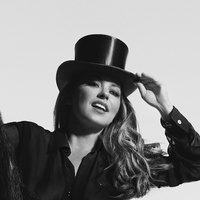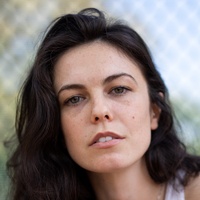On celebrating not knowing
Prelude
Tania Pérez Córdova is a visual artist based in Mexico City. Her sculptures are “devices to create pause,” as their contemplation reveals past and present possible events. Her upcoming solo show “Smoke, Nearby” at Chicago’s Museum of Contemporary Art opens April 2017.
Conversation
On celebrating not knowing
Visual artist Tania Pérez Córdova talks about titling her work, creating sculptures as devices to create pause, and working without specific plans.
As told to Laurel Schwulst, 1575 words.
In one of your work’s captions, you specified the glass material was specifically from “a window facing south.” How important is that kind of detail?
The glass pieces were all from the same place, an old studio of mine. When I named them, I thought it was important to mention whether they were the north windows or the south windows. It was a suggestion of how they really existed when they were windows.
When I showed the glass pieces, many people asked me, “So what’s happening to your studio now that it doesn’t have windows? Is rain coming in?” The mention of orientation helped form this image of another place and another time.
In titling my work, I decided that whenever there’s something happening, like an event or an activity, I include it as part of the materials. It was important for me to be able to insert it in the formalities of how work is described, which is with these captions. Captions are just how artworks are traditionally described. I prefer using captions to creating a new explanation outside that. I usually just list abstract situations as part of the materials. So for example, the earrings piece is made with bronze just as much as with a woman wearing an earring.

They say it’s like a rock, 2015. Glass from a window facing south and Nag Champa incense. 21 × 29 × 24 cm.
I read about your piece in which you asked a musician if you could borrow two of her piano keys for your piece. Is it difficult to negotiate the borrowing for your work?
Usually it is quite easy. My work usually has a link to some kind of real narrative, so it’s not an artifice. It is important for me that it’s real. It truly is a borrowed piano key, even if it would be very simple to just stage it.
I made a series of sculptures at that time I thought of as “devices to create pause”. Looking at them would not only be looking at them as sculptures, but thinking of the other situations they imply. In the case of the piano, I remember asking the owner of the piano, “Just keep playing your repertoire without those two keys.” I like the narrative that there would be a series of songs altered because of the missing keys.
I also had a work that included one earring and a SIM card. This obstruction would only happen during the show. Once the show was over, everything would go back to normal: the woman would wear both earrings again and the phone would work again.
You have a upcoming show at Chicago’s MCA. How has preparing for that show been unique to other shows?
I was invited to show a series of my works, and I proposed that I’d make “in-betweens”. So the idea is to remake old works so that the new works would be transitions between the old works.
Now that I’m talking to you, I suppose I never thought this before, but I realized this has a lot to do with my partner, Francesco. Francesco was translating this Italian poet who had never been translated. While he was translating, he thought, “I’m just going to write in between the lines because this poem is so beautiful.” So he’s just been adding lines to a translation. It’s strange because it’s not fully his own poem, but it’s not fully like the original. So it really is like an in-between, and that’s what’s good about it.
This reminds me of my friend’s story. Her dad has an oil company in the United States. He said that one of their tactics is future speculation. So, they’ll imagine a terrible oil spill. Then, they’ll make a series of in-between plans, given where they are at the present moment, to make sure that oil spill won’t happen.
Ah, so like reverse thinking. Amazing. Yeah, I am working in a way similar to the oil company. It’s almost as if you’ve set a beginning and an end point, and then you just need to figure out what the logic in-between is. It’s a new way for me to work and to be excited, since at the beginning I was not that keen on showing old work. It’s a good way to enjoy thinking about them again.
How important is it to you that people who buy your work understand it?
I hope they do, but I always have this doubt. I’m sure some work has been sold to people who really understand. But I decided that you don’t need to know things immediately. Maybe that comes with time.
I’m also completely fine if people look at the works just like objects. I’ve accepted that they have two dimensions and two lives, and it depends how people want to engage. Different people engage differently. Some people can’t be bothered to know more than what they see. That’s fair enough. It’s up to you how much you’d like to dig.
It’s also very important for me to not become cryptic on purpose. I don’t want the work to be about decoding a hidden knowledge. I’m more interested in creating a fragment. The void is as important as the work. I think about how the part that’s there and the part that’s not there interact.
Do you write a lot for your practice?
No. I mean, I write titles. But no, I don’t really write, write, write, write. I find it extremely painful. I would love to, but I just find it so painful. I collect more. I collect language or phrases that I like, or words, even if I’m not really sure why.
There’s a really beautiful anecdote I like to think about from this John Ashbery interview in The Paris Review, and somebody asks him, “What gets you started when writing a poem?” Then he tells this story of being in a public place and overhearing a phrase by someone nearby, out of context. He likes the phrase and uses it as the finishing line for his poem—it was exactly what he was looking for. I like that he didn’t even know what their conversation was about, and that they will never know their phrase was used for a famous poem.
You went to school in London, right?
I went to Goldsmiths, but I hated it. It took me a very long time to recover. I mean, I went there wanting to do work, but I came out being completely blocked. I remember thinking you go there to make more work, not to make less work, so give me back my money.
I don’t know if it works like this for everybody, but making work is not necessarily like hammering, and not really even switching off your brain. Part needs to happen somehow intuitively. You cannot have complete control.
I think that Goldsmiths program is very good, but it’s very bloated. It’s very “fake intellectual,” very close to the critical studies department. It’s almost like they are commissioning meaning or something.
When I work, I tell myself, “Don’t have specific plans.” I’m always really careful when I talk about my work to not say what it means because one should not know what it means. This became fundamental for me. I should never ever know what it means or what it does. I should just know where it comes from. This is what took me a long time to understand, but it’s what I needed to make work.
I remember this quote by the filmmaker Ingmar Bergman that said something like, “Intuition is like throwing a spear into the darkness, and intellect is about going to find it afterwards.”
That’s a good process.
I’ve been asked a few times to teach, but I always say no. I’m not sure I do something that can be taught. Maybe that sounds really romantic, but I feel like for me education was such a counterproductive experience. Maybe in a few years it’ll be more clear, but I don’t know. What can I say? Something like, ”I just collect random phrases and I’m not really sure why, I don’t even remember who wrote them.” I try to celebrate not knowing.

They say it makes miracles, 2015. Glass from a window facing north, plastic bag. 13 × 45 × 25.5 cm.
Tania Pérez Córdova recommends:
To read: The Performance of Becoming Human, by Daniel Borzutzky published by Brooklyn Art Press
To read: A man in a Room Spray-Painting a Fly… (or at least trying to…) by Francesco Pedraglio published by Bookworks.
To visit: British Museum´s object number 122294 which is in the Mespotamia Section and its description reads like:
“Woman's head wearing jewelry, preserved as excavated; head of body 53 in the great death pit; the jewelry includes a gold ribbon in the hair, a silver comb, a diadem of gold leaves, gold ear-rings and a silver comb with gold and lapis lazuli head.”
To visit: the Coatlicue Aztec stone at the Mexico City Anthropology Museum. The colossal stone was buried and unearthed episodically in a fascinating story over hundreds of years.
To watch when you have insomnia at night: a live stream of the Popocatepetl volcano online.
- Name
- Tania Pérez Córdova
- Vocation
- Visual artist

Some Things
Pagination



